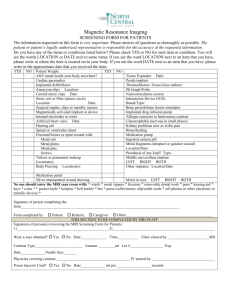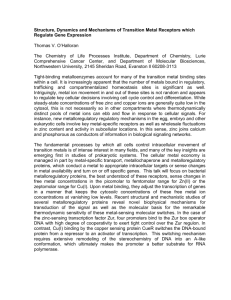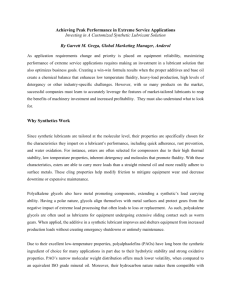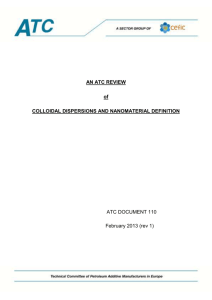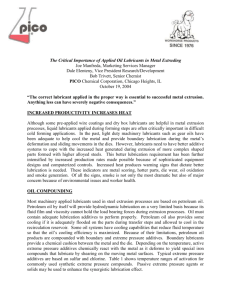EP Additives - Power Engineering & Manufacturing, LTD
advertisement
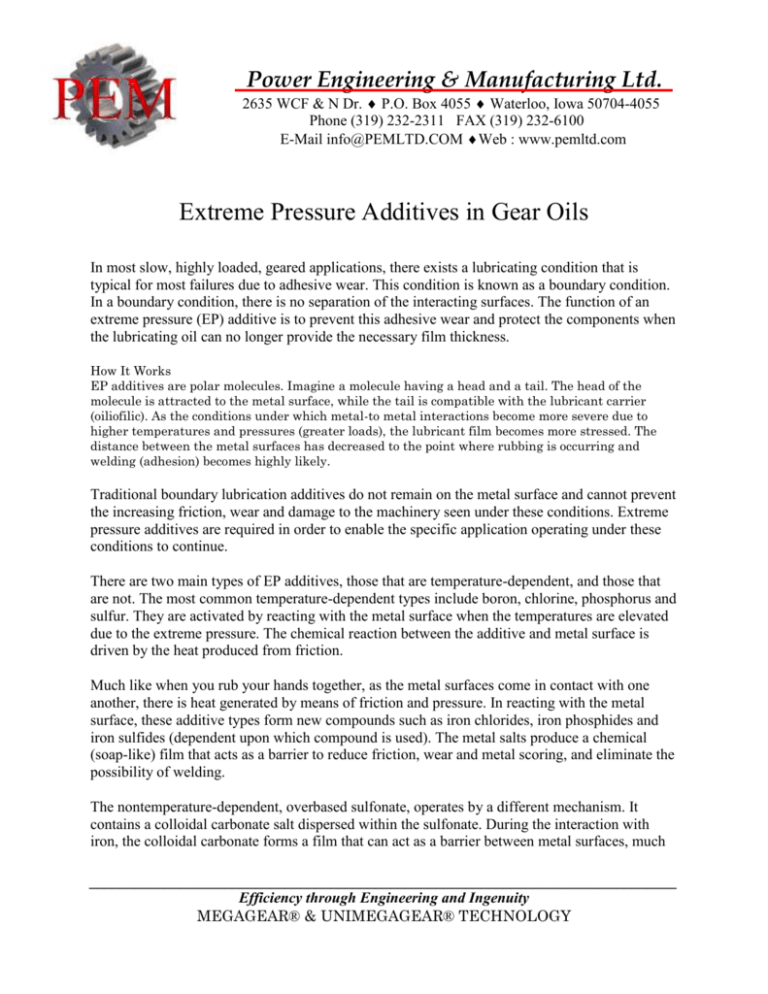
Power Engineering & Manufacturing Ltd. 2635 WCF & N Dr. P.O. Box 4055 Waterloo, Iowa 50704-4055 Phone (319) 232-2311 FAX (319) 232-6100 E-Mail info@PEMLTD.COM Web : www.pemltd.com Extreme Pressure Additives in Gear Oils In most slow, highly loaded, geared applications, there exists a lubricating condition that is typical for most failures due to adhesive wear. This condition is known as a boundary condition. In a boundary condition, there is no separation of the interacting surfaces. The function of an extreme pressure (EP) additive is to prevent this adhesive wear and protect the components when the lubricating oil can no longer provide the necessary film thickness. How It Works EP additives are polar molecules. Imagine a molecule having a head and a tail. The head of the molecule is attracted to the metal surface, while the tail is compatible with the lubricant carrier (oiliofilic). As the conditions under which metal-to metal interactions become more severe due to higher temperatures and pressures (greater loads), the lubricant film becomes more stressed. The distance between the metal surfaces has decreased to the point where rubbing is occurring and welding (adhesion) becomes highly likely. Traditional boundary lubrication additives do not remain on the metal surface and cannot prevent the increasing friction, wear and damage to the machinery seen under these conditions. Extreme pressure additives are required in order to enable the specific application operating under these conditions to continue. There are two main types of EP additives, those that are temperature-dependent, and those that are not. The most common temperature-dependent types include boron, chlorine, phosphorus and sulfur. They are activated by reacting with the metal surface when the temperatures are elevated due to the extreme pressure. The chemical reaction between the additive and metal surface is driven by the heat produced from friction. Much like when you rub your hands together, as the metal surfaces come in contact with one another, there is heat generated by means of friction and pressure. In reacting with the metal surface, these additive types form new compounds such as iron chlorides, iron phosphides and iron sulfides (dependent upon which compound is used). The metal salts produce a chemical (soap-like) film that acts as a barrier to reduce friction, wear and metal scoring, and eliminate the possibility of welding. The nontemperature-dependent, overbased sulfonate, operates by a different mechanism. It contains a colloidal carbonate salt dispersed within the sulfonate. During the interaction with iron, the colloidal carbonate forms a film that can act as a barrier between metal surfaces, much ______________________________________________________________________________ Efficiency through Engineering and Ingenuity MEGAGEAR® & UNIMEGAGEAR® TECHNOLOGY Power Engineering & Manufacturing Ltd. 2635 WCF & N Dr. P.O. Box 4055 Waterloo, Iowa 50704-4055 Phone (319) 232-2311 FAX (319) 232-6100 E-Mail info@PEMLTD.COM Web : www.pemltd.com like the temperature-dependent; however, it does not need the elevated temperatures to start the reaction. Basically, EP additives serve as your protection from wear when the lubricant itself can no longer separate the working surfaces. You can now breathe a sigh of relief knowing that you have specified a lubricant with EP where it is needed. Or have you? ______________________________________________________________________________ Efficiency through Engineering and Ingenuity MEGAGEAR® & UNIMEGAGEAR® TECHNOLOGY



